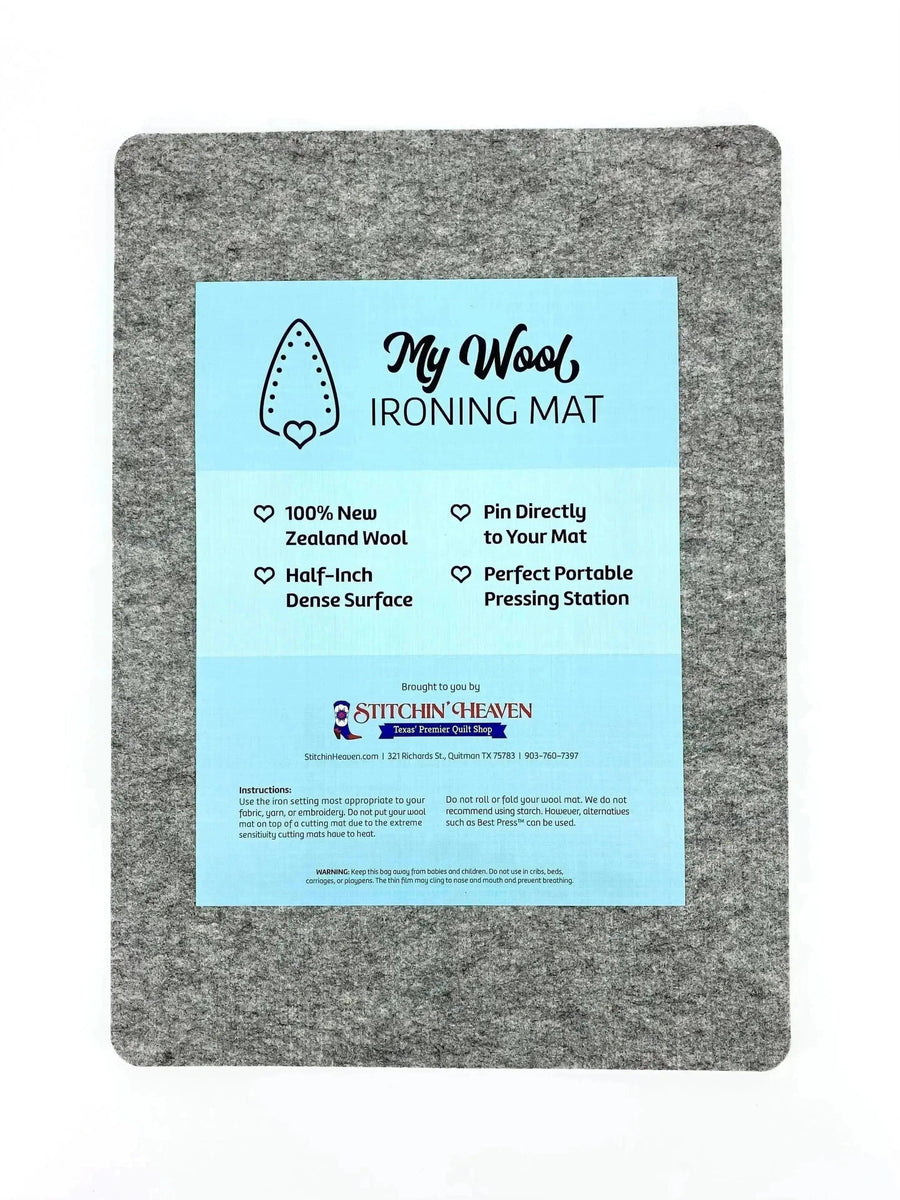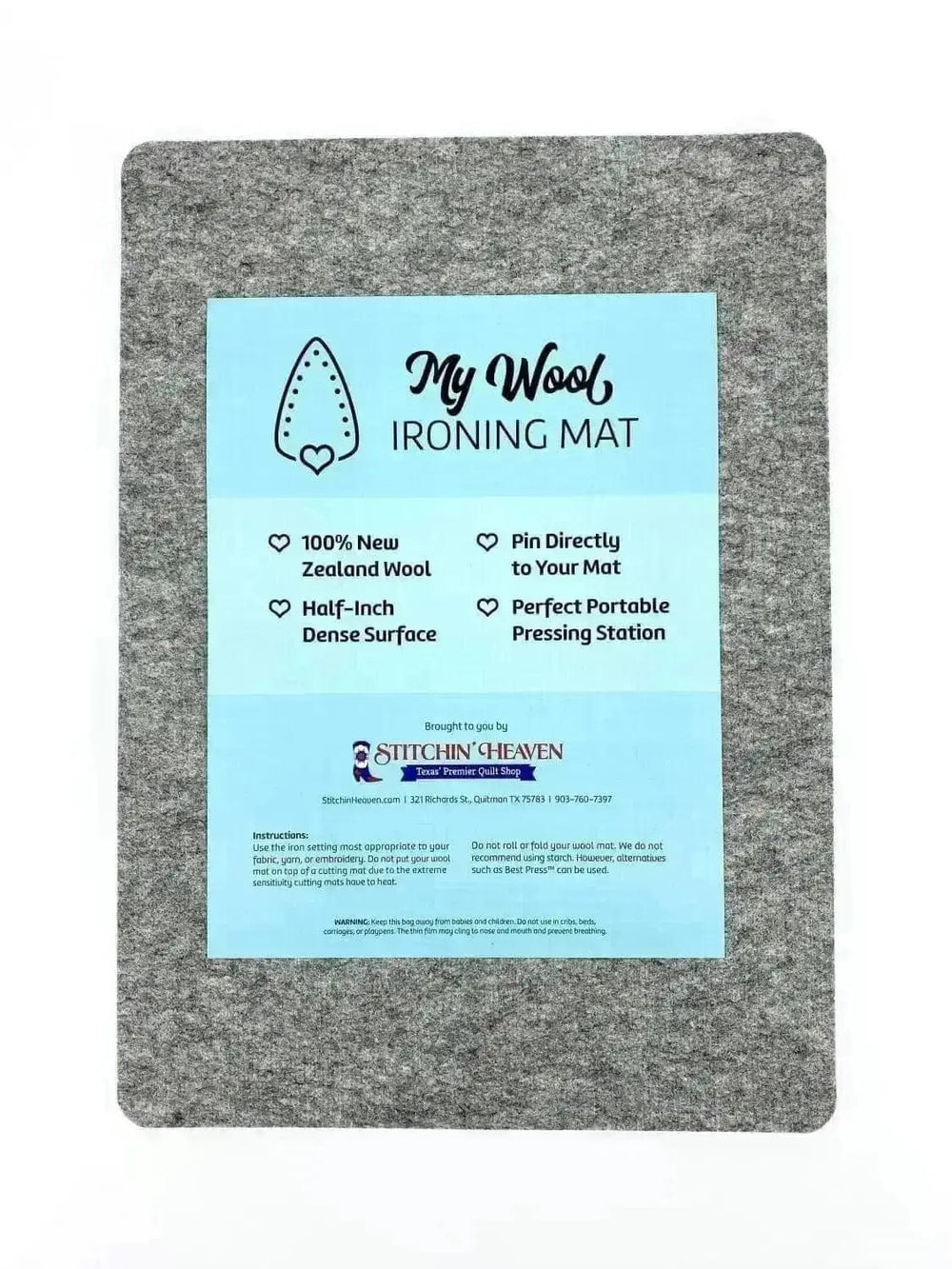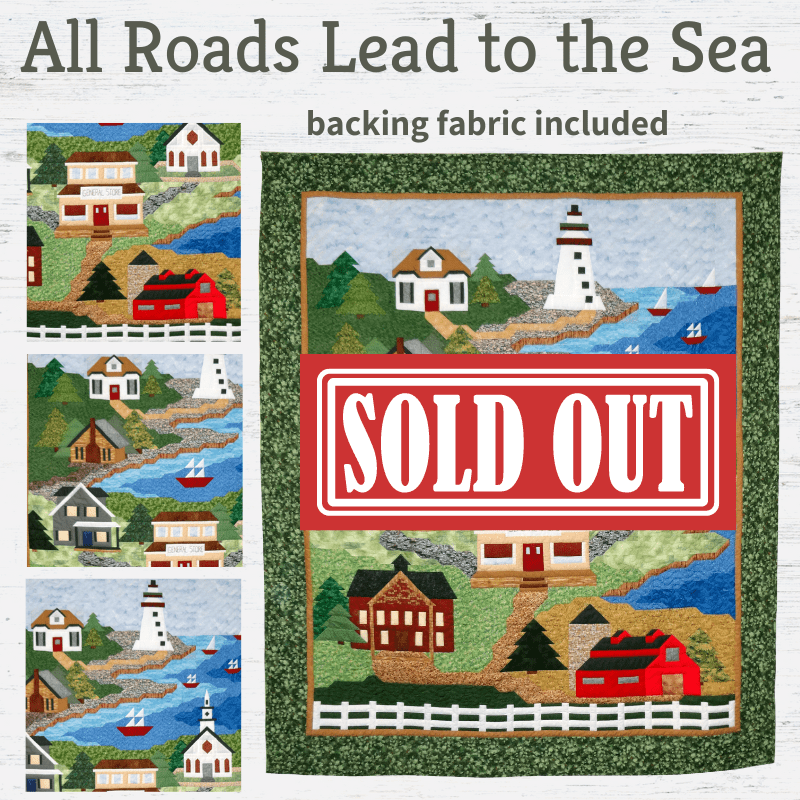Quilting and Sewing Cutting Mats: Our Favorites
The Best Cutting Mats for Quilting and Sewing
While finishing up a quilt for one of the quilting cruises I'll be going on in 2021, I began to notice that after nearly 15 years, my cutting mat was finally starting to show signs of wear. It had a bunch of little "fuzzies," and some of the cutting lines were beginning to fade noticeably.
As a quilter, cruiser, and employee of the best quilt shop, I began to research and ask questions regarding cutting mats and how to properly maintain them. Is it time for a new cutting mat, or do you just need to give your cutting mat a bath? Well, if you're like me, you just said, "What? My self-healing mat needs a bath?"
I'd been wondering about the best way to get all those fuzzy threads off my mat, so I launched into an extensive search of how the mat manufacturers recommend you keep mats clean — and moisture is definitely recommended! The mat that started this cleaning adventure is one of the green self-healing mats from Olfa. I've had it FOREVER (okay, at least 15 years), and it was getting fuzz stuck in some of the cutting lines.
Just the fact that I've had the same mat for that length of time tells you they're good quality and can last if you take care of them. Since I really didn't want to fill my bathtub, as some people had recommended, I heavily spritzed mine with plain water while it was laying flat on my dining table and waited about 25 minutes. I then dried it off with a towel and was amazed at how the green color was bright and consistent once again.
Just by drying the mat, I was able to see lots of the fuzz lifted out of those small cut marks. When the mat was completely dry, I took a pink school eraser and rubbed it over any spots that still had fuzz, and the rest of the remaining fuzz disappeared! Since I don't own one of the white plastic mats, I'm not sure if it would work on those. While doing my research, I learned all kinds of information about our precious cutting mats, and I thought I'd share what I found.

Cutting mats are not created equal.
Cutting mats for years have saved hobbyists time, energy, and money. It's important to purchase one that meets your needs, but you might need more than one mat. Some quilters choose to use several mats so they always have the one they need handy.
Some cutting mats are made out of self-healing materials, while others are made of plastic. The cutting surface can make a difference in the functionality of the mat. You have to think about the types of projects you'll do so you choose the right ones.
Self-healing mats last longer and tend to protect your rotary cutter. This makes these mats an even better investment since you won't have to replace the blades as often. The self-healing mats are usually nonslip and can help you make consistent cuts for your quilting project.
Self-healing cutting mats cost a little more. The plastic mats are cheaper, dull your rotary blades quickly, and are more likely to get deep grooves on the grid lines you use often. This means that you'll eventually have to deal with cuts that aren't consistent unless you replace the mat when you start to notice the grooves.
I would recommend you go with a self-healing mat and get one with a length or width of at least 23 inches. This lets you work on just about any quilting project you're going to do. It's even useful if you choose to use fabric accents for scrapbooking projects.
Buying the largest mat you have the space for and money to buy is the way to go! My personal favorite brands are cutting mats by Martelli and Creative Grids. It's easy to cut smaller swatches of fabric on a larger mat, but it's impossible to cut larger pieces on a smaller mat. Most people don't realize what size work surface they'll actually use most often.
Check your mat ruler lines against your cutting ruler lines.
Did you know not all mats and rulers measure exactly the same, even if they're from the same brand?
Take the ruler you'll be using in your project and compare it against the lines on your mat. You'll have to look closely because even small differences can have a big impact on how your project comes out.
Do they all line up perfectly?
Consistently use the same measuring device when cutting out your projects! If you're using your ruler as your measuring device, don't use the squares on your cutting mat unless they align perfectly. This can help ensure your project has consistent cuts that make it look more professional.
DIY crafters should check the lines before each project they work on. Sometimes, cutting mats that aren't self-healing will develop deep gouges. These can change the cutting lines because the gouges will make the grid marks wider.
Your cutting mat should be rotated.
What I mean by this is that you should periodically turn your cutting mat a quarter-turn (or a half-turn, depending on your allotted cutting space) and use different lines or areas of your mat. Also, if you're cutting repetitive strips of, say, 5 inches, cut some on the 5-inch line, then start a group from the 1-inch line and cut on the 6-inch line, then the 2-inch line and cut on the 7-inch line, etc.
If you're using a ruler rather than the lines on your mat, follow the same procedure and just move your fabric further down your mat as you cut. This helps reduce the chance you'll have to deal with deep gouges on certain lines when you're handling the fabric cutting aspect of your project.
Many manufacturers of cutting mats offer a warranty. This doesn't mean they'll cover the normal use damage that's done when you don't rotate the mat. You don't have to worry about this as much if you have a self-healing rotary cutting mat as these mats don't develop the deep gouges as quickly as other types. The durability makes them worth the extra cost.
You should also consider when you need to change the mat. If you use your mat a lot, consider a heavy-duty one instead of one that's made for general crafting. If you have to buy different sizes of mats, this might be costly, but it can save you money in the long run and make your projects have a more professional appearance since the cuts will be cleaner.
Keep your mat cool.
Ironing on your cutting mat is not recommended! To protect the cutting table mat and keep the smooth surface that enables you to make clean cuts, you should keep the heat from the iron, as well as steam from a steamer, away from the workspace where you keep the cutting mat.
The heat will cause the cutting mat to warp, and once warped, it's a challenge to ever get it flat again. Even on a large cutting mat, it can be difficult to work around a warped area.
If you have a mat in a hot car, make sure it's out of the direct sun and laying flat. Better yet, have you seen the foldable cutting mats from Olfa? They come in two sizes and are perfect for taking to your next retreat or cruise!! They'll fit inside your suitcase and lay nice and flat — away from the direct heat during travel.
Foldable mats also make it a bit easier to store a large-size mat if your quilting space isn't that big. This can free up space for other items such as sewing machines that you may need if you handle multiple quilting or even sewing projects.
Use a rotary blade that's sharp and new.
As quilters, we're probably the worst at trying to use a blade until it just won't cut another strip, no matter how hard you push! Pushing too hard with your cutter because of a dull blade is very hard on your mat. Even a self-healing mat can't heal a deep cut (which is likely caused when your blade is dull).
Use the correct blade and change it when it's dull! Always having new blades on hand keeps you from worrying that you won't have one when it's time to change the blade.
A sharp blade not only protects your cutting mat; it also helps produce a high-quality edge on the cut, so your quilting project looks more professional.
Rotating Cutting Mats
By now you've probably seen the different styles of rotating cutting mats. Some of these are reversible, so you can use both sides. Some have different measurements on each side. This is helpful if a project uses metric measurements.
From buying several different products, I've learned that some rotate as expected and some don't. I've also worn out more than one of the original rotating cutting mats, and since the base and mat were connected, I had to purchase another one. This is one of the downsides to some of these mats.
Then Martelli came out with its rotating cutting mat! Oh, my word! If you ever have to square up blocks or you've discovered our favorite easy quilt using the Scrap Crazy 8" templates, you'll fall in love with this rotating mat.
Another amazing feature is that if you ever wear out the mat, you can replace only the mat. The ball bearing base is still just as good as ever and rotates easily with one hand. Amazing!
Storing Your Cutting Mat
Always store your mat flat. This helps protect its durability, which benefits you as you complete your projects. A flat mat produces the straight cuts you need when you're quilting.
If you try to lean it up against a wall, your cutting mat will eventually get a curved shape that's difficult (and time-consuming) to correct. In some cases, you can't correct it at all. This means you'll have to buy a new mat so you can keep on quilting.
Conclusion
Cutting mats with a self-healing property are easier to care for and hold their value longer than regular hard cutting mats. This makes them an ideal option for serious quilters.
Like all our quilting tools, a cutting mat needs to be taken care of. Storing your cutting mat in the right location and temperature will prolong its longevity.
Remember to soak your cutting mats every once in a while and use sharp rotary blades.
Do you have any other tips or information regarding your favorite cutting mat and its care?
Thank you for reading — now you have the 411 on my knowledge of cutting mats! Hope you've enjoyed this information, and please let me know if you have any other topics you'd like me to investigate by sharing them in the comments.






